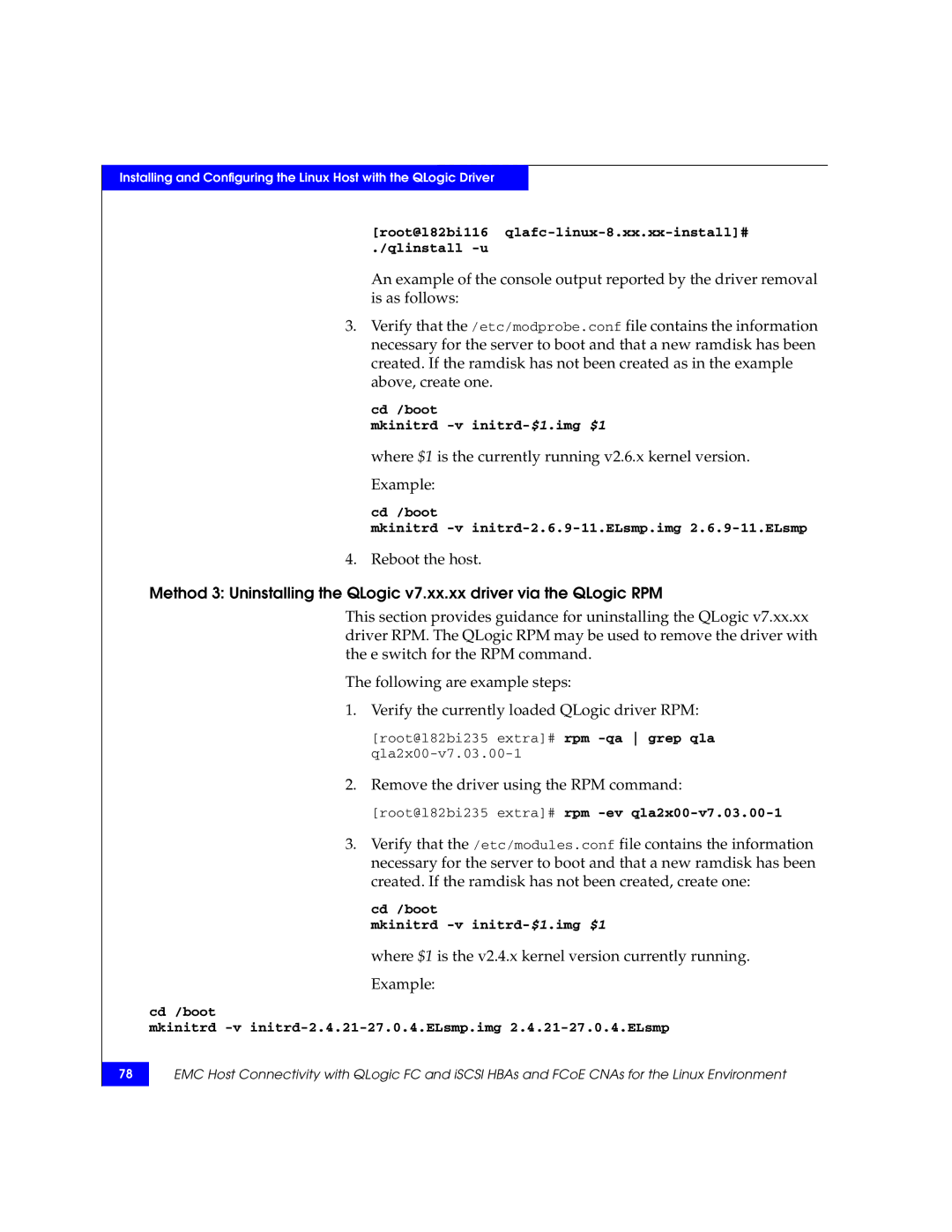
Installing and Configuring the Linux Host with the QLogic Driver
[root@l82bi116
./qlinstall
An example of the console output reported by the driver removal is as follows:
3.Verify that the /etc/modprobe.conf file contains the information necessary for the server to boot and that a new ramdisk has been created. If the ramdisk has not been created as in the example above, create one.
cd /boot
mkinitrd
where $1 is the currently running v2.6.x kernel version. Example:
cd /boot
mkinitrd
4.Reboot the host.
Method 3: Uninstalling the QLogic v7.xx.xx driver via the QLogic RPM
This section provides guidance for uninstalling the QLogic v7.xx.xx driver RPM. The QLogic RPM may be used to remove the driver with the e switch for the RPM command.
The following are example steps:
1.Verify the currently loaded QLogic driver RPM:
[root@l82bi235 extra]# rpm
2.Remove the driver using the RPM command:
[root@l82bi235 extra]# rpm
3.Verify that the /etc/modules.conf file contains the information necessary for the server to boot and that a new ramdisk has been created. If the ramdisk has not been created, create one:
cd /boot
mkinitrd
where $1 is the v2.4.x kernel version currently running. Example:
cd /boot
mkinitrd
78
EMC Host Connectivity with QLogic FC and iSCSI HBAs and FCoE CNAs for the Linux Environment
